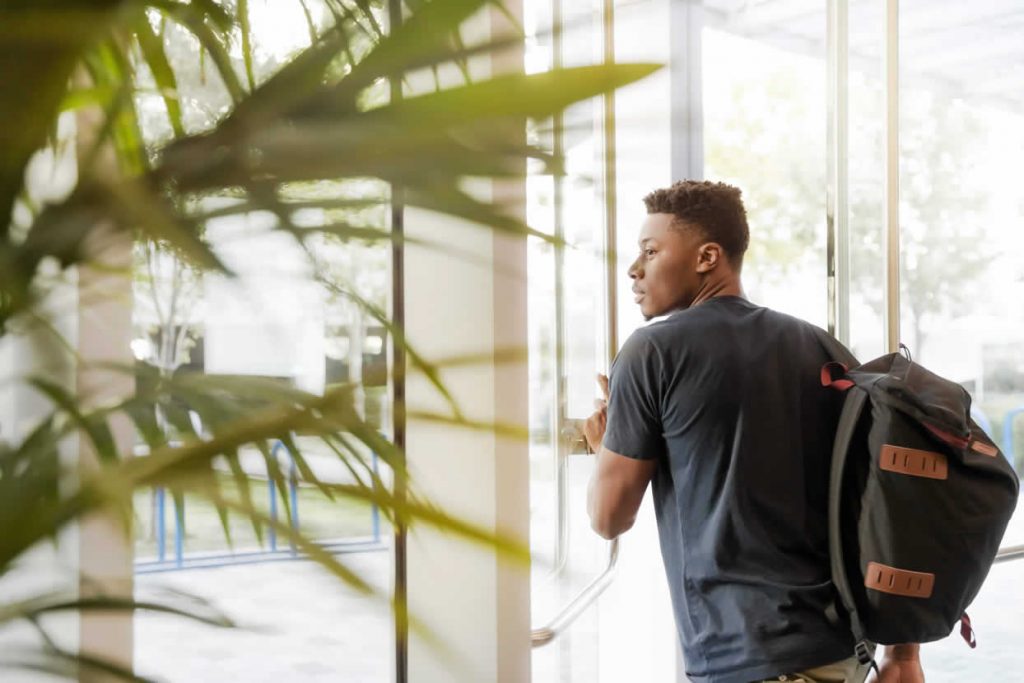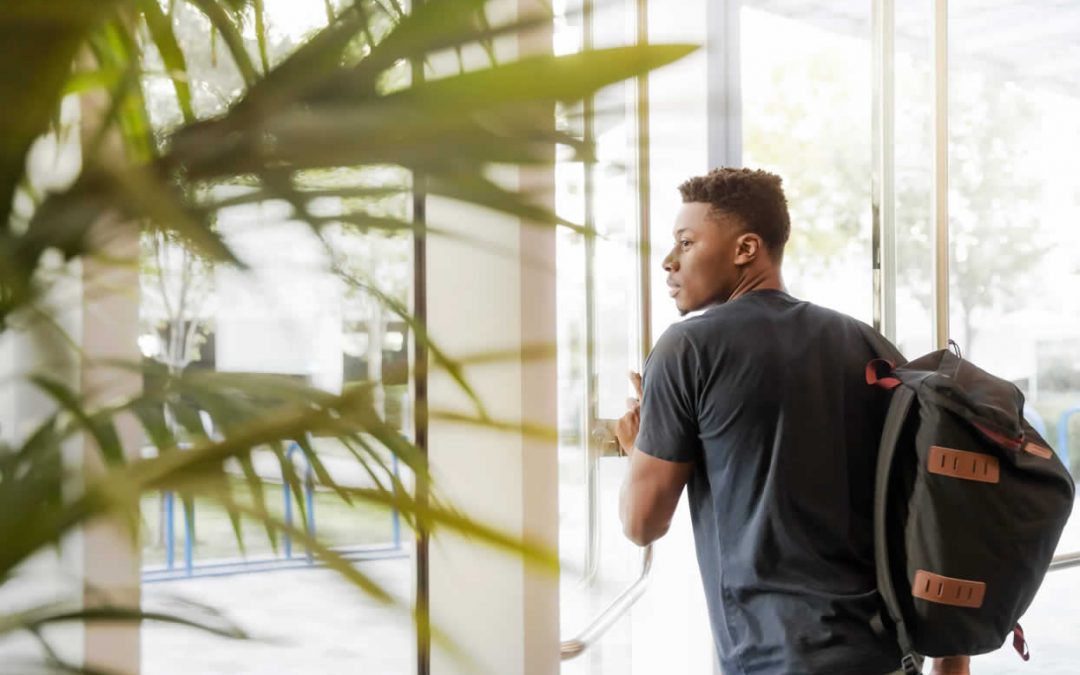Research confirms that heavy backpacks can be a burden on children’s posture.
Wearing backpacks that are too heavy can cause serious strain on the body, compromising structural stability.
According to the National Safety Council (2018), over loaded backpacks can cause postural distortion patterns and increase the risk of back pain and other back conditions. To help prevent postural distortion often associated with heavy backpack use and create awareness for better posture habits we have put together some backpack posture tips.
Healthy Backpack Tips
- Do not carry backpacks that are more than 10% of your body weight – Due to increased forward head posture and subjective pain complaints at 15% and 20% bodyweight loads.

2. Always choose backpacks with two shoulder straps – and use both of them. – This prevents asymmetric posture.

3. Pack heavier items such as textbooks closer to your spine in the back of the backpack. – If the load is too heavy, balance the load with a bag on your front AND your back to minimize postural distortion.
4. Keep backpack size to a minimum. Picture: People – The more room there is inside, the more likely you are to fill it.

5 Avoid twisting while pulling a trolley bag. – This can cause asymmetric posture and there is an increased risk of lumbar and thoracic rotation.

6. Balance the weight of your body while carrying a backpack. – Avoid bending forward to compensate for the weight of the backpack or leaning to one side.
7. While walking with a backpack keep your head up and pull your chin back so your ears are aligned over your shoulders.
To demonstrate the effect your child’s backpack has on their posture you can take a picture of them with their backpack on, and another one without their backpack. You can even do the slump test that we do when you come in for your adjustments – breathe in, breathe out, let your body slump.
In addition to our backpack posture tips, it is also important to have your child’s spine and nervous system checked by a Chiropractor to catch any postural distortions early and to maximize your child’s health potential.
References:
Al-Khabbaz, Y., Shimada, T., & Hasegawa, M. (2008) The effect of backpack heaviness on trunk-lower extremity muscle activities and trunk posture. Gait and Posture, 28(2) p. 297-302.
Brackley, H., Stefenson, J., & Selinger, J. (2009) Effect of backpack load placement on posture and spinal curvature in prepubescent children. Children and Ergonomics, Work, 32(3) p. 351-360.
Feingold, A. & Jacobs, K. (2002) The effect of education on backpack wearing and posture in a middle school population. Work, 18(3) p. 287-294.
Kim, M. Yi, C., Kwon, O., Cho, S., & Yoo, W. (2008) Changes in neck muscle electromyography and forward head posture of children when carrying schoolbags. Ergonomics, 51(6) p. 890-901.
Kistner, F., Fiebert, I., & Roach, K. (2012) Effect of backpack load carriage on cervical posture in primary schoolchildren. Work, 41(1) p. 99-108.
National Safety Council (2018) https://www.nsc.org/home-safety/safety-topics/child-safety/backpacks
Neuschwander, T., Cutrone, J., Macias, B., Cutrone, S., Murthy, G., Chambers, H., & Hargrens, A. (2009) The Effect of Backpacks on the Lumbar Spine in Children A Standing Magnetic Resonance Imaging Study. Spine, 35(1) p. 83-88.
Rodriguez-Oviedo, P., Ruano-Ravina, A., Perez-Rios, M., Garcia, F., Gomez-Fernandez, D., Fernanzez-Alonso, A., Carriera-Nunez, I., Garcia-Pacios, P., & Turiso, J. (2012) School children’s backpacks, back pain and back pathologies. Arch Dis Child, 97 p. 730–732
Schmidt, J. & Docherty, S. (2010) Comparison of the posture of school children carrying backpacks versus pulling them on trolleys. Clinical Chiropractic, 13(4) p. 253-260.
Peak Chiropractic Centre located in Claremont are family-friendly chiropractors focused on relieving aches, pains and posture correction. We offer in-house X-Ray facilities.

